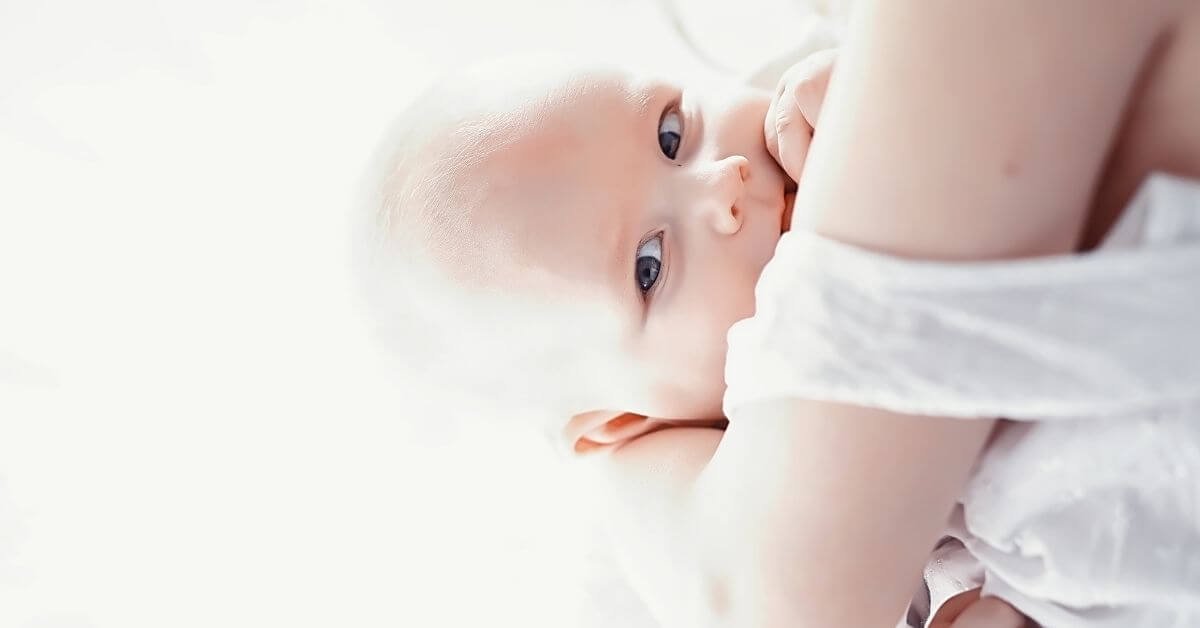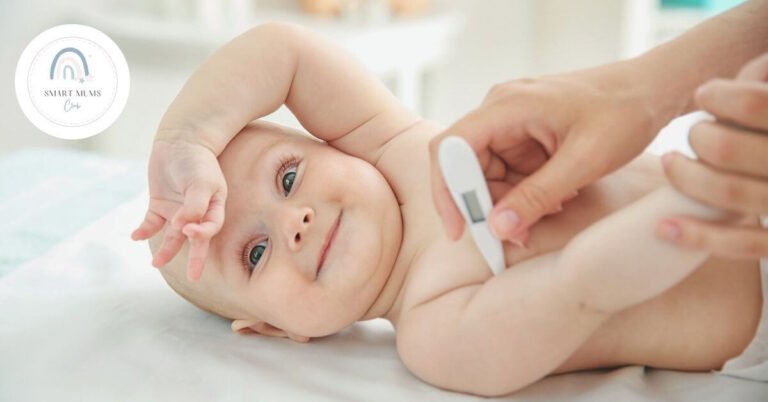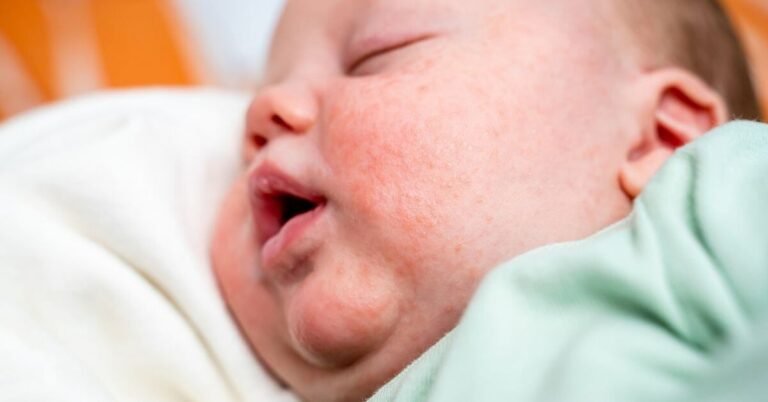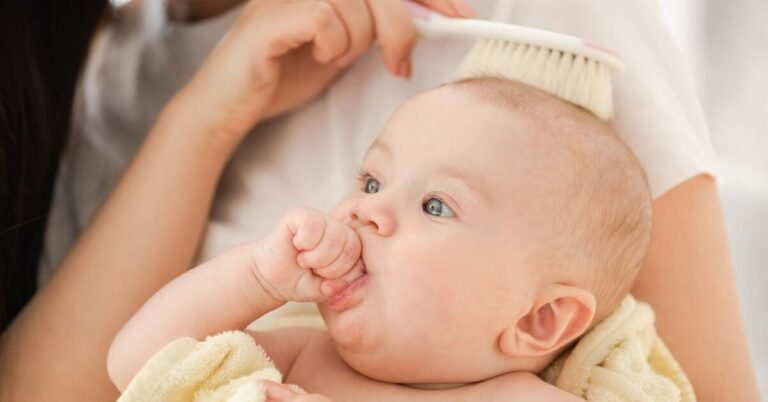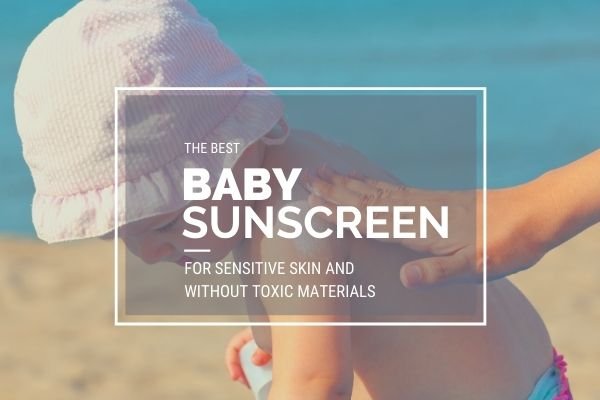How to heal a cracked nipple while breastfeeding?
Trying to heal a cracked nipple while breastfeeding is often difficult and frustrating. However, it should never be a reason to give up on breastfeeding.
Every new mom that starts breastfeeding may experience some tenderness or discomfort. Fortunately, this nipple tenderness does not last long. The nipples will soon get tougher, and breastfeeding becomes a lot easier.
Though sometimes nipples will crack, which may be a sign that the baby is not latching on correctly. Having a cracked nipple can cause irritation, pain, and sometimes even bleeding.
This happens most often when a baby is just sucking on the nipple without taking most of the areola in his mouth, which is essential for a proper latch.
AFFILIATE DISCLAIMER: SOME OF THE LINKS IN THIS POST ARE AFFILIATE LINKS. IF YOU USE THESE LINKS TO BUY SOMETHING, WE MAY EARN A COMMISSION. SEE FULL DISCLAIMER.
Read on to learn more about what causes a cracked nipple. Plus, we offer advice on the best home remedies for sore, cracked nipples from breastfeeding.
6 Common causes for a cracked nipple
- Sometimes babies have a wrong sucking technique because of the mouth’s anatomical problems, for example, if they are born with a tight frenulum (tongue-tie). Surgical release of the tongue tie will often significantly improve the baby’s sucking.
- Abruptly pulling the baby from the breast before first breaking the suction can also cause trauma to the nipples.
- Breast pumps, especially if used with too much suction, can traumatize the nipples.
- Frequently washing with soap or other harsh cleaning agents may cause dry, cracked nipples.
- If the nipples are too long in contact with soggy breast pads, they are extra susceptible to injury and infection (thrush or bacterial).
It is also possible that you are allergic to the nipple cream or lotion you use and get cracked dry nipples or even eczema.
Every mother who has had cracked nipples knows how hard it is for them to heal as they crack open again with every feeding.
How to heal a cracked nipple while breastfeeding?
Before nursing your baby:
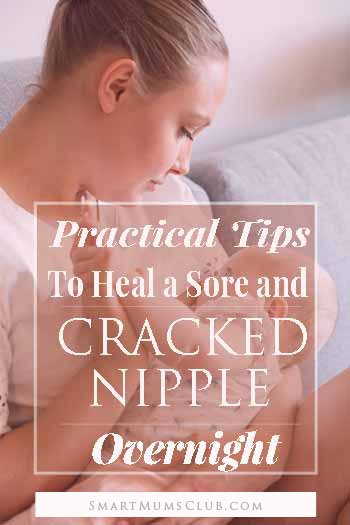
- Take some pain-reducing medicine 30 minutes before nursing. Ibuprofen and Acetaminophen are pain reducers you can take when you are breastfeeding.
- Be careful when you are pulling off nursing pads that are stuck to the nipple. They may remove freshly formed crusts and open the nipple crack again. Always wet them first before you take them off.
- If your breasts are engorged, manually compress some milk to soften the breast. This makes it is easier for your baby to latch on correctly. This will also make the milk flowing so your baby will drink not so vigorously.
1. While nursing your baby:
- Nurse your baby on the less painful breast first. If your baby is not that hungry, he will suck less hard on the painful side. Nursing your baby more often will also make him less hungry.
- Make sure the baby latches on correctly. The Baby’s mouth should cover the entire areola and not just the nipple.
- Try feeding your baby in alternate positions (cradle hold, football hold). This will put pressure on different parts of the nipple.
- If a baby does not release the breast when he finishes, break the suction by gently inserting your little finger in the corner of the baby’s mouth or by pulling down on his chin.
2. After you finished nursing:
- Proper hygiene is important to avoid infection of the breast. Rinse the nipples afterward with salty water or a sterile saline solution. Washing your nipples with soap or alcohol-containing products will dry out the nipples and is not recommended.
- After nursing your baby, you can put some freshly expressed breast milk on your nipples and let them dry in the air. Breast milk contains antibodies and promotes the repair and growth of skin cells.
- Apply a medical-grade lanolin ointment. Both Lansinoh and Medela have effective lanolin nipple creams, which help to soften the nipples and promote healing. These products are made specifically for breastfeeding. These creams do not need to be washed off before nursing as they do not harm your baby if he ingests them.
- In the case of nipple thrush, apply an antifungal ointment after washing with the saline solution.
- Finally, you can put soothing gel pads to protect your nipples from rubbing against your clothing. They are great because they are reusable, don’t stick to the skin, and prevent scabs and crusts.
3. Between feedings:
Spend as much time with your breasts exposed to the air as possible or wear nipple shells in your bra that allow air to circulate the nipples. Frequently change your nursing pads and do not use the ones with plastic linings.
Frequently asked questions
Can I use a nipple shield for cracked nipples?
A nipple shield can be helpful in the case of a sore, cracked nipple. When the injured nipple makes breastfeeding excruciating, a nipple shield forms a temporary barrier that will make breastfeeding more tolerable and give the nipple time to heal.
However, a nipple shield can be why milk production reduces as the baby sucks less effectively from your breast. Moreover, the baby may become dependant on drinking with a nipple shield. So, use them no longer than absolutely needed.
Is it ok to breastfeed with a cracked nipple?
Yes, you should continue to breastfeed even if it is painful, and there is some blood coming from the nipple. Cracked or bleeding nipples are not a reason to stop breastfeeding. Even if you see that baby spits up some blood afterward. Swallowing some blood will not hurt your baby and can occur until the cracking and bleeding have healed. Focus on trying to heal the cracked nipple with the at-home treatment on this page.
Should you pump to let a cracked nipple heal?
When the pain is severe, and you find that it’s unbearable to breastfeed, pumping for a few days and bottle feeding the baby breastmilk can be a solution to let the nipples recover. You can also feed on one side and pump on the other to give your nipples a break.
You can gently express milk by hand or with a breast pump and let the baby drink it from a bottle.
How long for cracked nipples to heal?
In most situations, a cracked nipple will improve in a week to 10 days. But it can take much longer if you do nothing to address the problem.
Correct positioning is the most important factor in helping a damaged nipple heal and allows effective nursing free of pain. If a cracked nippled holds no probability of healing despite all your attempts, don’t hesitate to ask for the guidance of your doctor, pediatrician, or a lactation specialist from La Leche League in your area.

